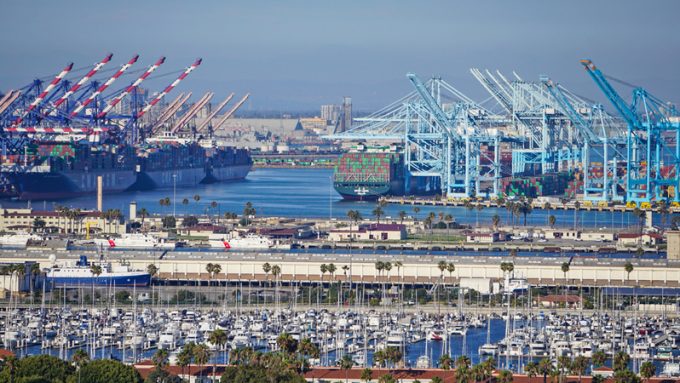Prestige Falcon Houthi attack could be deadliest so far, with 16 crew missing
UPDATE: The Indian Navy reported that it has found nine of the 16 crewmembers alive, ...

There are “bright skies ahead” at the port of Los Angeles, according to its executive director, Gene Seroka, given the improving economic outlook.
However, he said, for the port to take advantage of a rebound in demand, it was “crucial” a deal was reached on the long outstanding west coast labour agreement, highlighted by the pause in cargo operations at terminals at Easter.
The number of import containers arriving at the port in March increased 28%, month on month, as carriers pared-back ...
Trump tariffs see hundreds of cancelled container bookings a day from Asia
'To ship or not to ship', the question for US importers amid tariff uncertainty
'Chaos after chaos' coming from de minimis changes and more tariffs
Forto 'sharpens commercial priorities' as it lays off one-third of staff
List of blanked transpac sailings grows as trade war heats up and demand cools
'Disastrous' DSV-Schenker merger would 'disrupt European haulage market'
EC approves DSV takeover of DB Schenker
Overcapacity looms for ocean trades – with more blanked sailings inevitable
Amazon Air’s metamorphosis: 'a different air cargo unit from two years ago'
Shippers in Asia restart ocean shipment bookings – but not from China
India withdraws access for Bangladesh transhipments, in 'very harmful' decision
'Tariff hell' leaves industries in limbo – 'not a great environment to plan'

Comment on this article